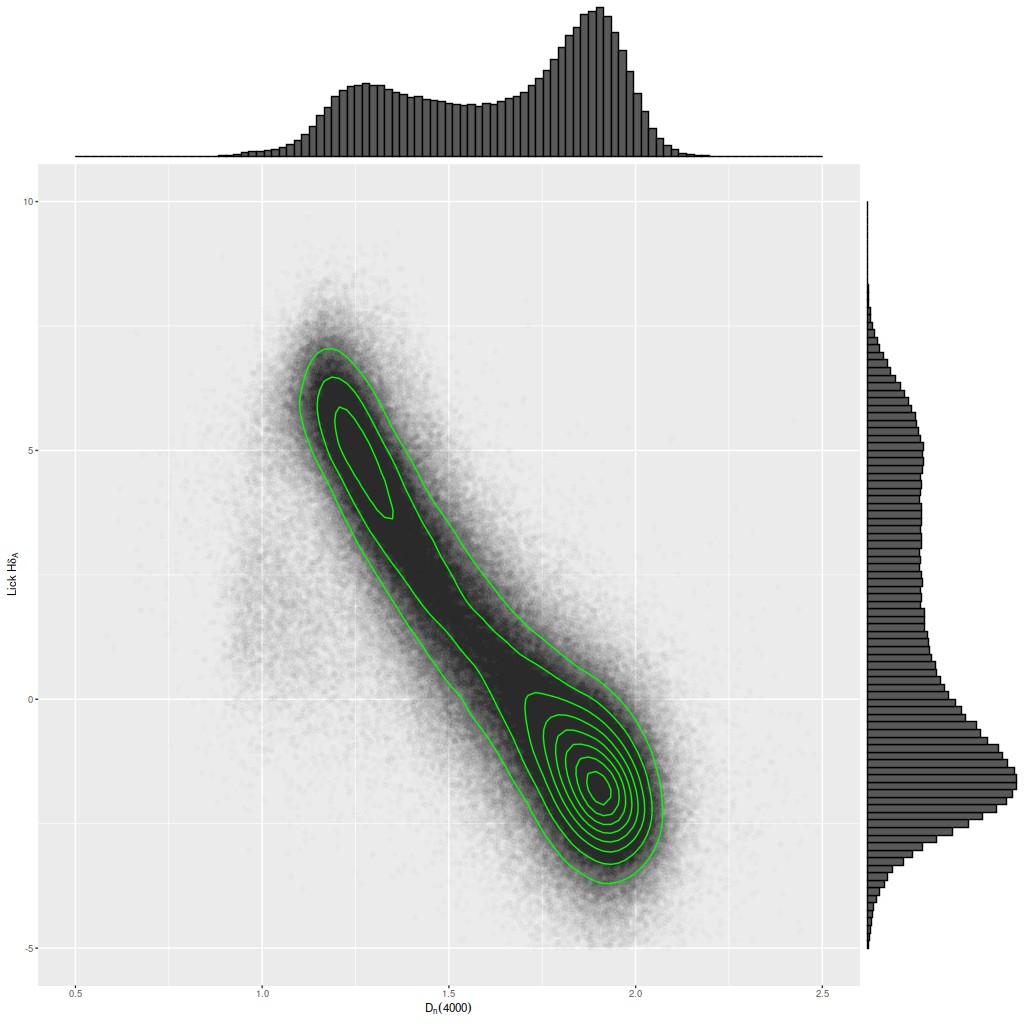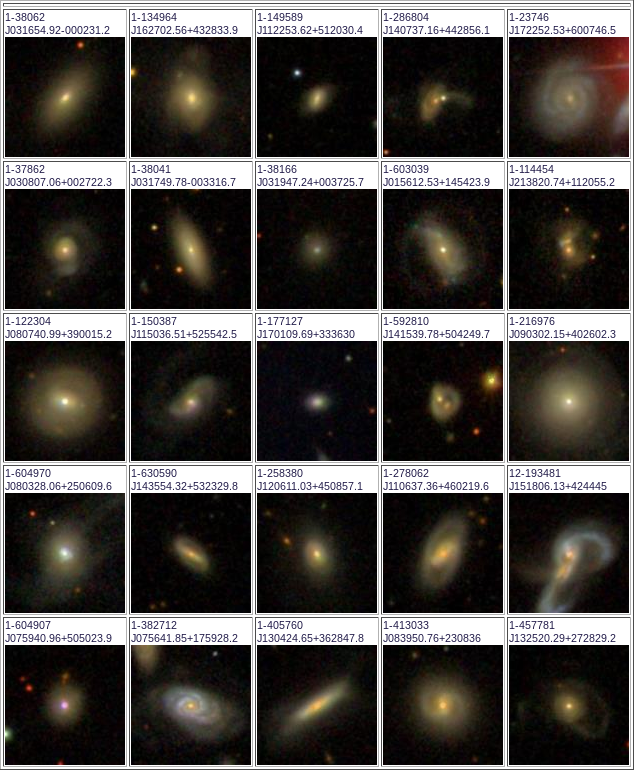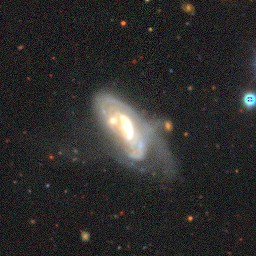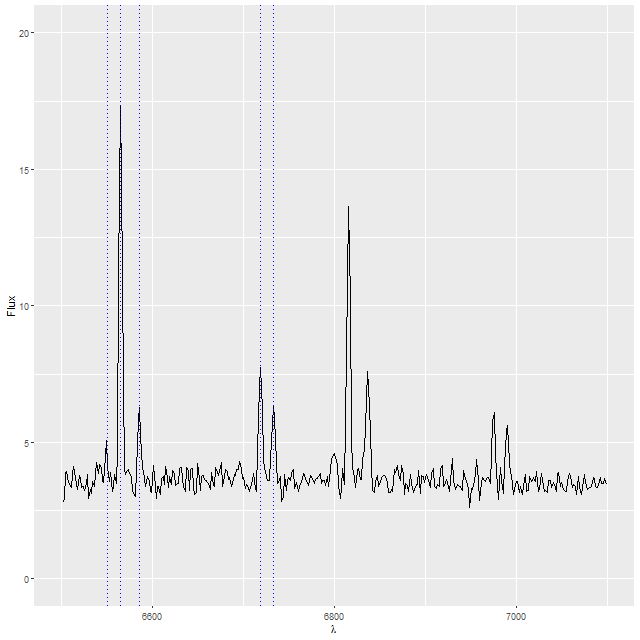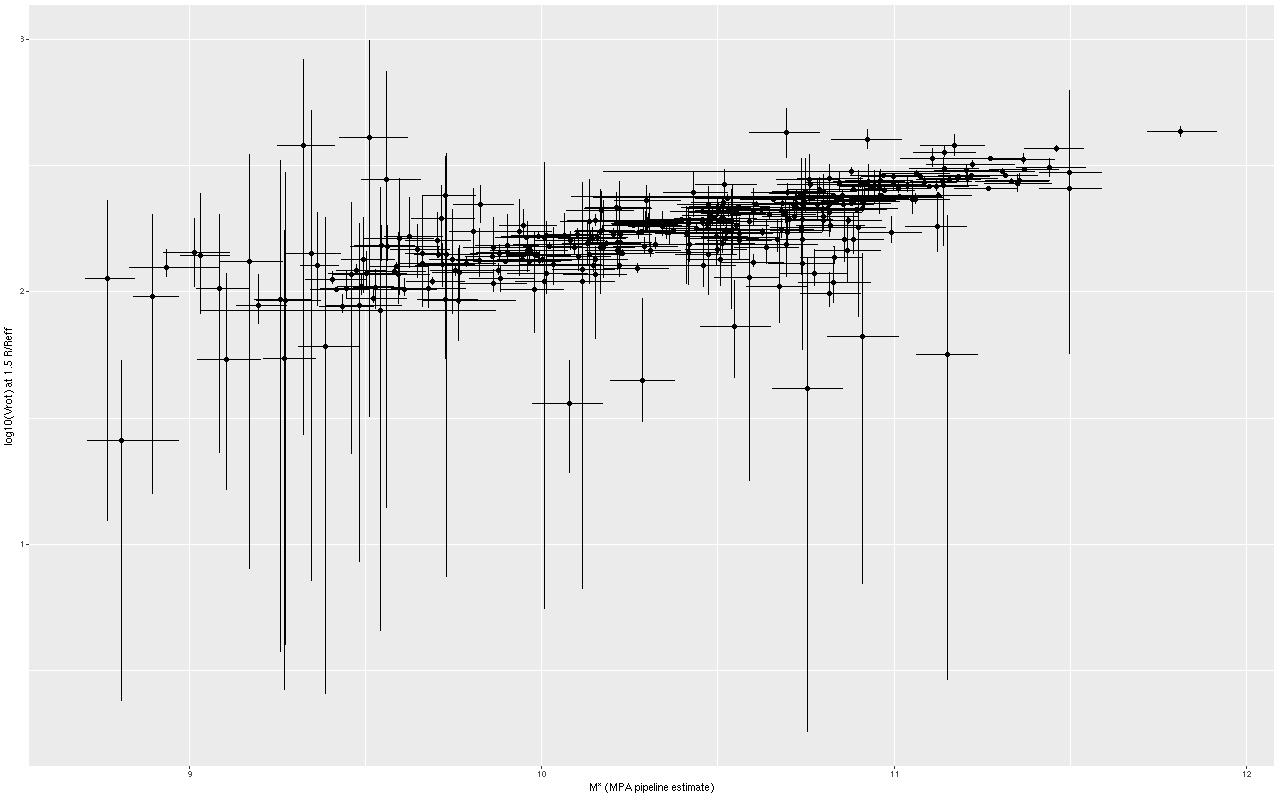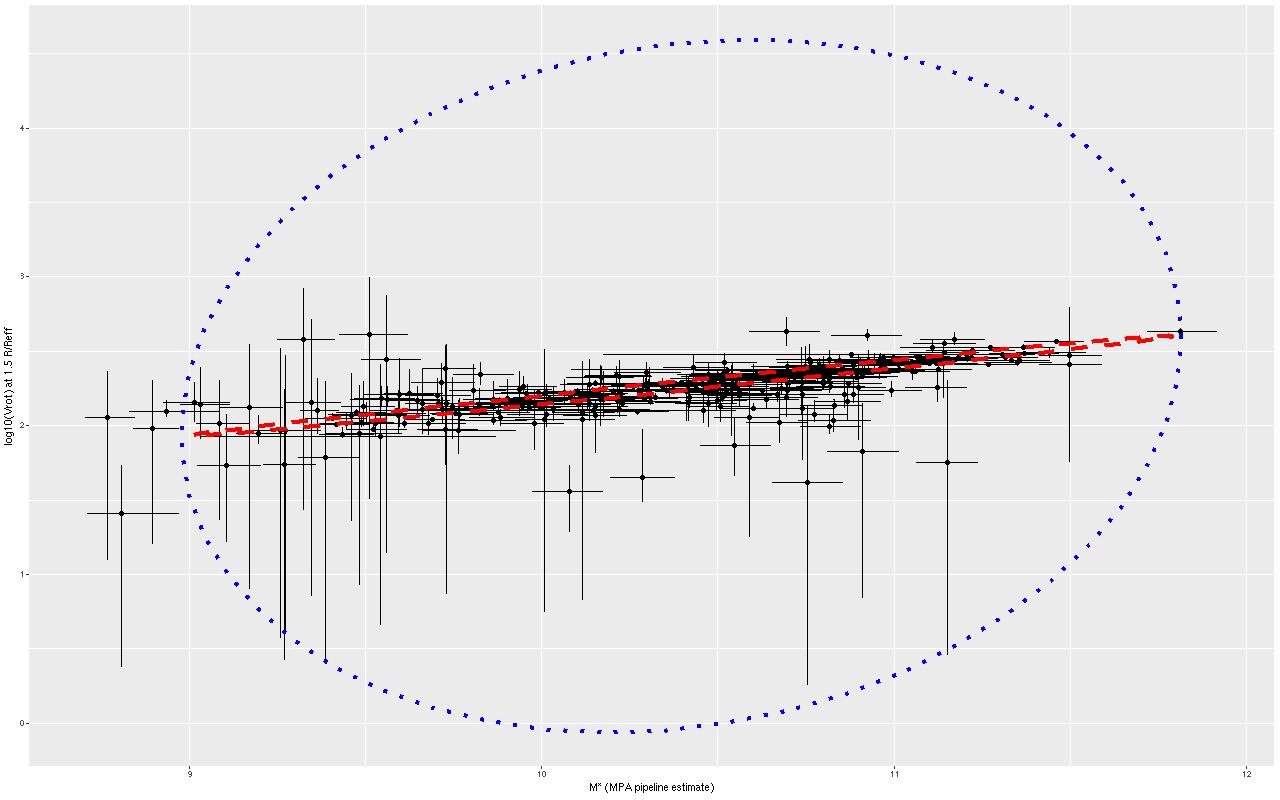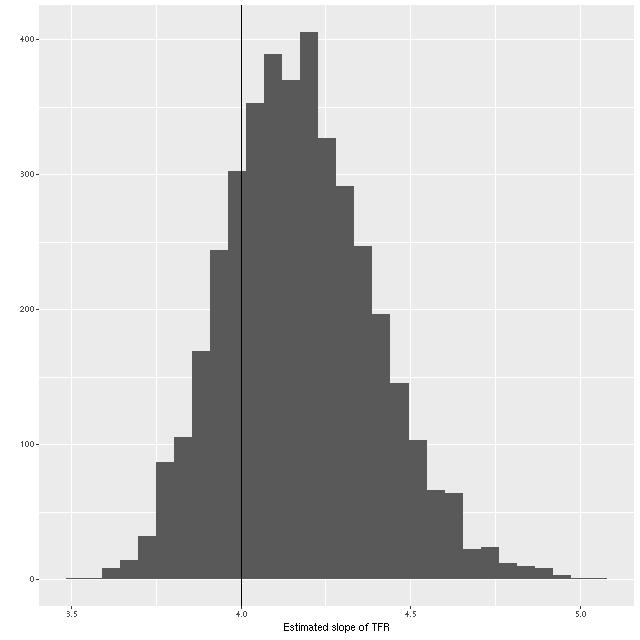A while back I came across a paper by Fraser-McKelvie et al. (2020, arxiv id 2009.07859) that used Galaxy Zoo classifications to select a sample of barred spiral galaxies with MaNGA observations. This was a followup to a paper by Peterken et al. (2020, arxiv id 2005.03012) that also used Galaxy Zoo classifications to select a parent sample of spiral galaxies (barred and otherwise). There’s nothing new about using GZ classifications for sample selection of course, although these papers are somewhat notable for going farther down the decision tree than usual. What was new to me though when I decided to get my own samples is the SDSS CasJobs database now has a table named mangaGalaxyZoo containing GZ classifications for (I guess) all MaNGA galaxies. The classifications come from the Galaxy Zoo 2 database supplemented with some followup campaigns to fill in the gaps in GZ2. Besides greater completeness than the zoo2* database tables that can also be queried in CasJobs this table contains the newer vote fraction debiasing procedure described in Hart et al. (2016). It’s also much faster to query because it’s indexed on mangaid. When I put together the sample of MaNGA disk galaxies that I’ve posted about several times I took a somewhat indirect approach of looking for SDSS spectroscopic objects close to IFU centers and joining those with classifications in the zoo2MainSpecz table. The query I wrote took about 3 1/2 hours to execute, whereas the ones shown below required no more than a second.
Pasted below are the complete SQL queries, and below the fold are lists of the positions and plateifu IDs of the samples suitable for copying and pasting into the SDSS image list tool. These queries run in the DR16 “context” produced 287 and 272 hits respectively, with 285 unique galaxies in the barred sample and 263 uniques in the non-barred. These numbers are a little different than in the two papers referenced at the top. Fraser-McKelvie ended up with 245 galaxies in their barred sample — most of the difference appears to be due to me selecting from both the primary and secondary MaNGA samples, while they only used the “Primary+” sample (which presumably include the primary and “color enhanced” subsamples). I also did not make any exclusions based on the drp3qual value although I did record it. The total sample size of 548 galaxies is considerably smaller than the parent sample from Peterken, which was either 795 or 798 depending on which paper you consult. The main reason for that is probably that Peterken’s parent sample includes all bar classifications while I excluded galaxies with debiased f_bar levels > 0.2 in my bar-less sample. My barred fraction of around 52% is closer to guesstimates in the literature.
Both samples contain at least a few false positives, as is usual, but there are only one or two gross misclassifications. One that was especially obvious in the barred sample was this early type galaxy, which clearly has neither a bar or spiral structure and at least qualitatively has a brightness profile more characteristic of an elliptical. Oddly, the zoo2MainSpecZ entry for this object has a completely different set of classifications — the debiased vote fraction for “smooth” was 84%, so most volunteers agreed with me. This suggests maybe a misidentification in the mangaGalaxyZoo data.
Besides this really obvious case I found a few with apparent inner rings or lenses, and a few galaxies in both samples appear to me to be lenticulars with no clear spiral structure. The first of the two below again has a completely different set of classifications in zoo2MainSpecZ than in the MaNGA table.
Although I didn’t venture to count them a fair number of galaxies in the non-barred sample do appear to have short and varyingly obvious bars. Of course the query didn’t exclude objects with some bar votes — presumably higher purity could be achieved by lowering the threshold for exclusion. And again, there are a few lenticulars in the spiral sample. As my sadly departed friend Jean Tate often commented the galaxy zoo decision tree doesn’t lend itself very well to identifying lenticulars.
Unfortunately I have nothing useful to say about Fraser-Mckelvie’s main research topic, which was to decide if, and perhaps why, barred spirals have lower star formation rates than otherwise similar non-barred ones. 500+ galaxies are far more than I can analyze with my computing resources. Perhaps a really high purity sample would be manageable. I may post an individual example or two anyway. The MaNGA view of grand design spirals in particular can be quite striking.
select into gzbars m.mangaid, m.plateifu, m.plate, m.objra, m.objdec, m.ifura, m.ifudec, m.mngtarg1, m.drp3qual, m.nsa_z, m.nsa_zdist, m.nsa_elpetro_mass, m.nsa_elpetro_phi, m.nsa_elpetro_ba, m.nsa_elpetro_th50_r, m.nsa_sersic_n, gz.survey, gz.t01_smooth_or_features_count as count_features, gz.t01_smooth_or_features_a02_features_or_disk_debiased as f_disk, gz.t03_bar_count as count_bar, gz.t03_bar_a06_bar_debiased as f_bar, gz.t04_spiral_count as count_spiral, gz.t04_spiral_a08_spiral_debiased as f_spiral, gz.t06_odd_count as count_odd, gz.t06_odd_a15_no_debiased as f_notodd from mangaDrpAll m join mangaGalaxyZoo gz on gz.mangaid = m.mangaid where m.mngtarg2=0 and gz.t04_spiral_count >= 20 and gz.t03_bar_count >= 20 and gz.t01_smooth_or_features_a02_features_or_disk_debiased > 0.43 and gz.t03_bar_a06_bar_debiased >= 0.5 and gz.t04_spiral_a08_spiral_debiased > 0.8 and gz.t06_odd_a15_no_debiased > 0.5 and m.nsa_elpetro_ba >= 0.5 and m.mngtarg1 >= 1024 and m.mngtarg1 < 8192 order by m.plateifu
select into gzspirals m.mangaid, m.plateifu, m.plate, m.objra, m.objdec, m.ifura, m.ifudec, m.mngtarg1, m.drp3qual, m.nsa_z, m.nsa_zdist, m.nsa_elpetro_mass, m.nsa_elpetro_phi, m.nsa_elpetro_ba, m.nsa_elpetro_th50_r, m.nsa_sersic_n, gz.survey, gz.t01_smooth_or_features_count as count_features, gz.t01_smooth_or_features_a02_features_or_disk_debiased as f_disk, gz.t03_bar_count as count_bar, gz.t03_bar_a06_bar_debiased as f_bar, gz.t04_spiral_count as count_spiral, gz.t04_spiral_a08_spiral_debiased as f_spiral, gz.t06_odd_count as count_odd, gz.t06_odd_a15_no_debiased as f_notodd from mangaDrpAll m join mangaGalaxyZoo gz on gz.mangaid = m.mangaid where m.mngtarg2=0 and gz.t04_spiral_count >= 20 and gz.t03_bar_count >= 20 and gz.t01_smooth_or_features_a02_features_or_disk_debiased > 0.43 and gz.t03_bar_a06_bar_debiased <= 0.2 and gz.t04_spiral_a08_spiral_debiased > 0.8 and gz.t06_odd_a15_no_debiased > 0.5 and m.nsa_elpetro_ba >= 0.5 and m.mngtarg1 >= 1024 and m.mngtarg1 < 8192 order by m.plateifuContinue reading “Using Galaxy Zoo classifications to select MaNGA samples”

